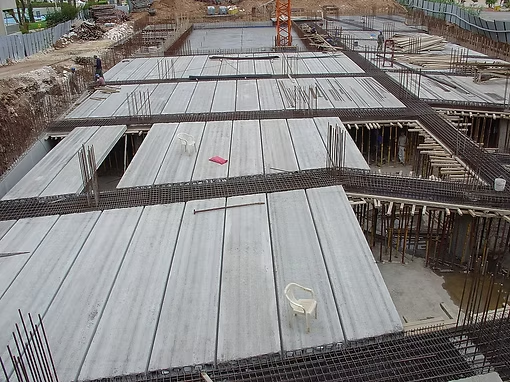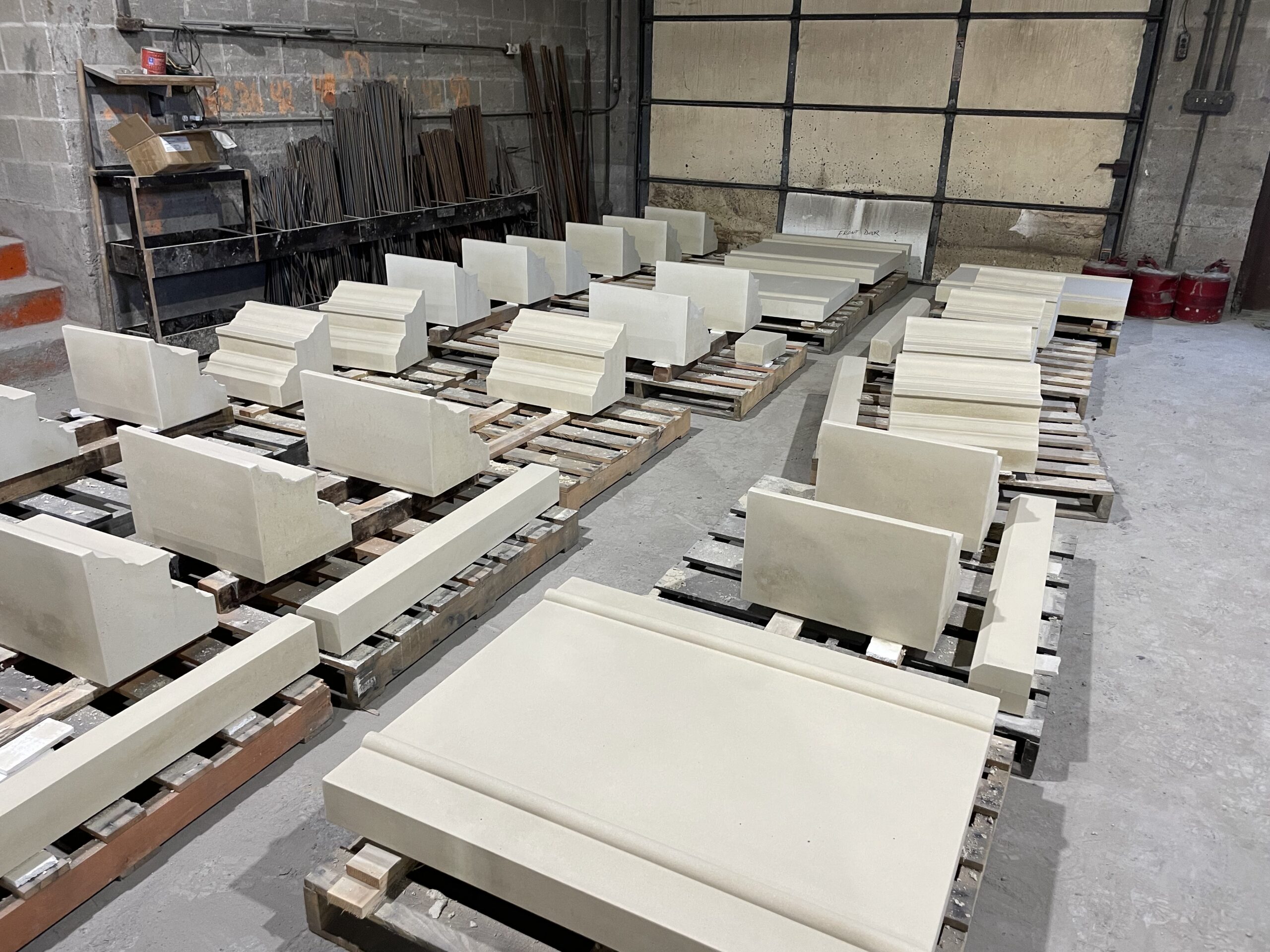Ever wonder why some concrete structures seem to last forever? The secret often lies in prestressed precast concrete—a technique that boosts strength, reduces cracking, and allows for longer spans using less material. This blog breaks down how it works and why it’s a game-changer in modern construction.
Allowing Longer Spans with Fewer Supports
One of the biggest advantages of prestressed precast concrete is its ability to span long distances without needing as many supports. In fact, some precast floor systems can stretch over 100 feet with just 28 inches of depth—roughly the size of a basketball court without any columns in the middle.
This is possible because prestressing places the concrete under compression before any loads are applied. That added strength:
- Reduces the need for thick, bulky elements
- Allows for thinner, lighter components
- Speeds up construction with fewer support elements
It’s a smart solution for wide-open spaces like parking garages, warehouses, and arenas.
Reducing the Risk of Cracking Under Tension
Concrete is strong under compression but weak under tension—and that’s where prestressing makes the difference.
By applying internal compressive forces using tensioned steel strands, prestressed precast concrete:
- Resists cracking
- Protects against water infiltration
- Improves durability over time
This added strength also benefits transportation and installation. Precast pieces can better withstand impacts during shipping and handling, leading to fewer on-site repairs and replacements.
How is Precast Concrete Prestressed?
Prestressing is achieved through two main methods: pre-tensioning and post-tensioning. Both apply compressive force to the concrete to enhance its structural performance, but they work slightly differently.
Pre-Tensioning Method
The most common method in precast plants, pre-tensioning involves the following steps:
- Steel strands are stretched and anchored across a casting bed using hydraulic jacks.
- Concrete is poured around the tensioned strands.
- After curing for 12–16 hours, the strands are cut using a torch.
- The tension is released, transferring compressive force into the hardened concrete.
This process creates a strong, pre-compressed concrete element that’s ready for use in bridges, beams, and other heavy-duty structures.
Transferring Compressive Force After Curing
Once the concrete has cured, the steel strands are released from tension. They are anchored in place by chucks with conical steel wedges, which help transfer the force into the concrete.
This compressive load helps prevent cracks, enhances load-bearing strength, and allows for longer spans and thinner sections—all while maintaining structural integrity.
Increased Structural Efficiency
Prestressed precast concrete improves structural efficiency in several key ways:
- Lighter elements mean reduced load on foundations.
- Thinner sections use less material while still carrying heavy loads.
- Longer spans allow for open designs with fewer interruptions.
This efficiency leads to:
- Reduced material costs (less concrete and steel)
- Faster construction timelines
- Longer-lasting structures with minimal maintenance
It’s a perfect blend of strength, design freedom, and sustainability.
Reduced Construction Costs and Material Usage
Prestressed precast concrete offers significant savings by using fewer materials and less labor:
- Thinner and lighter components reduce concrete and steel needs.
- Factory-produced pieces speed up job site installation.
- Fewer joints and connections simplify construction and reduce risk of leaks or structural weak points.
These benefits result in lower total project costs and a smaller environmental footprint—making prestressed precast ideal for sustainable building practices.
Applications of Prestressed Precast Concrete
Prestressed precast concrete plays a vital role in a wide range of modern construction projects. Its high strength and durability make it an excellent choice for:
Bridges and Civil Structures

From highway overpasses to rail bridges and pedestrian walkways, prestressed precast is the preferred solution for:
- Long spans with heavy loads
- Fast installation times
- Low maintenance requirements
Structural systems like bulb-Ts and deep double tees offer impressive span-to-depth ratios—ideal for high-performance infrastructure.
Conclusion
Prestressed precast concrete stands out as a game-changer in construction. It offers stronger, more durable structures that can span longer distances. This method allows builders to create thinner, lighter sections while boosting load-bearing capacity.
By combining pre-tensioning and post-tensioning techniques, engineers can craft efficient and cost-effective solutions for various projects. From towering buildings to sprawling bridges, prestressed precast concrete shapes our modern world with its unique blend of strength and versatility.
FAQs
Prestressing increases the strength and durability of precast concrete. By adding tension to internal steel cables, the concrete can better resist heavy loads and prevent cracking. This technique allows for longer spans, thinner components, and more efficient structural designs—ideal for bridges, beams, and large flooring systems.
Steel tendons or cables are stretched and anchored inside a mold before the concrete is poured. Once the concrete cures and reaches the desired strength, the tension is slowly released. This compression strengthens the concrete, making it more resilient under load.
Prestressed precast concrete has many perks. It’s stronger than regular concrete. It can span longer distances without support. This concrete resists cracking better. It also lasts longer and needs less upkeep.
No. Prestressing is best suited to precast concrete produced in controlled factory settings. These environments allow for the precise placement and tensioning of steel cables. While some on-site methods can prestress concrete, they’re more complex and less common than factory-based precast systems.
Recent Posts

Why Landscaping Pros Prefer Precast Concrete Over Poured-in-Place

Why & How is Precast Concrete Prestressed?

